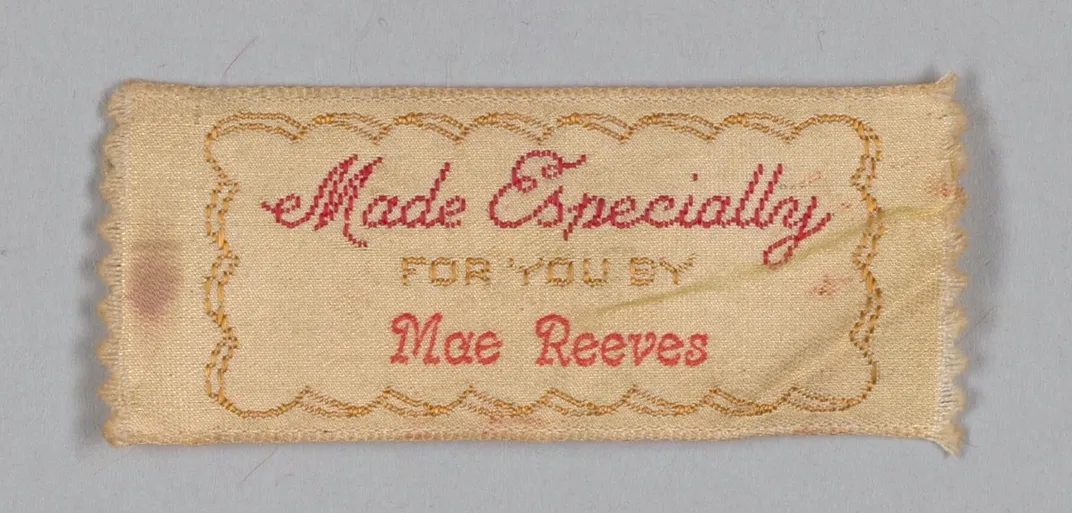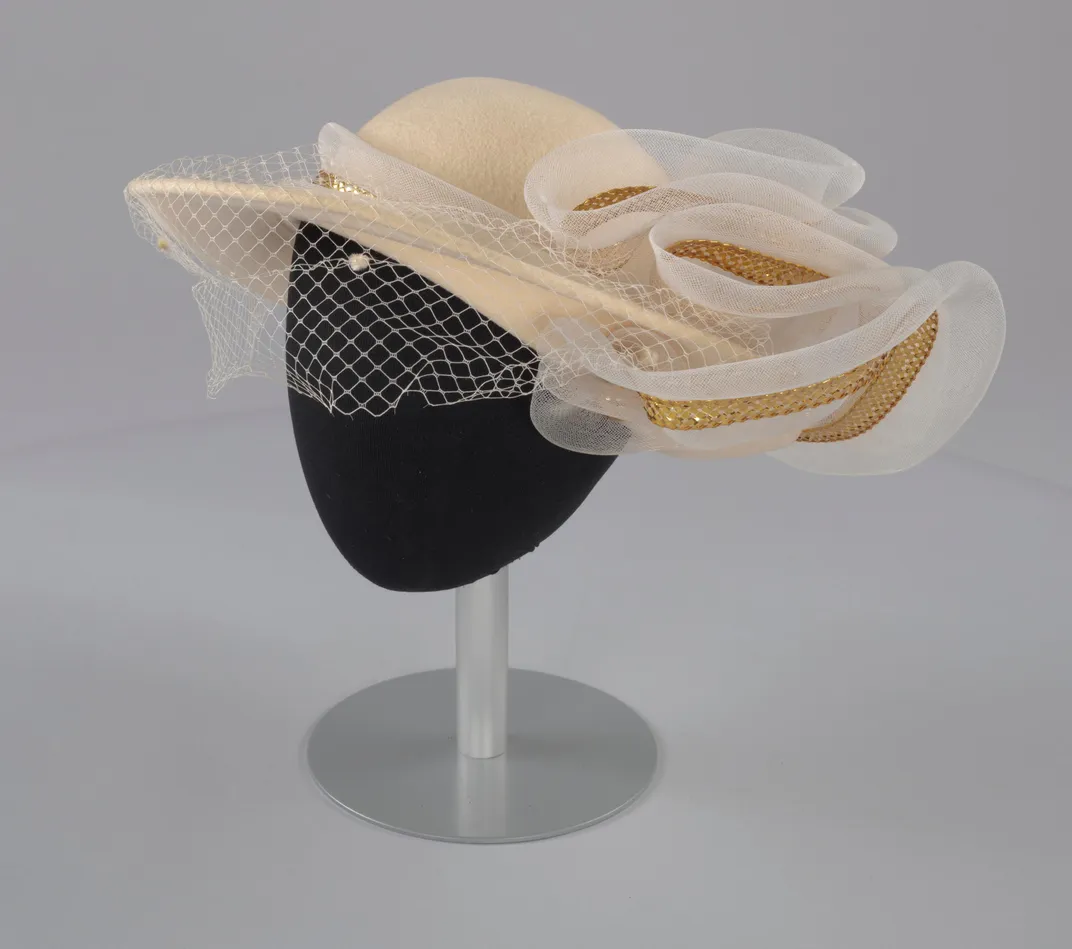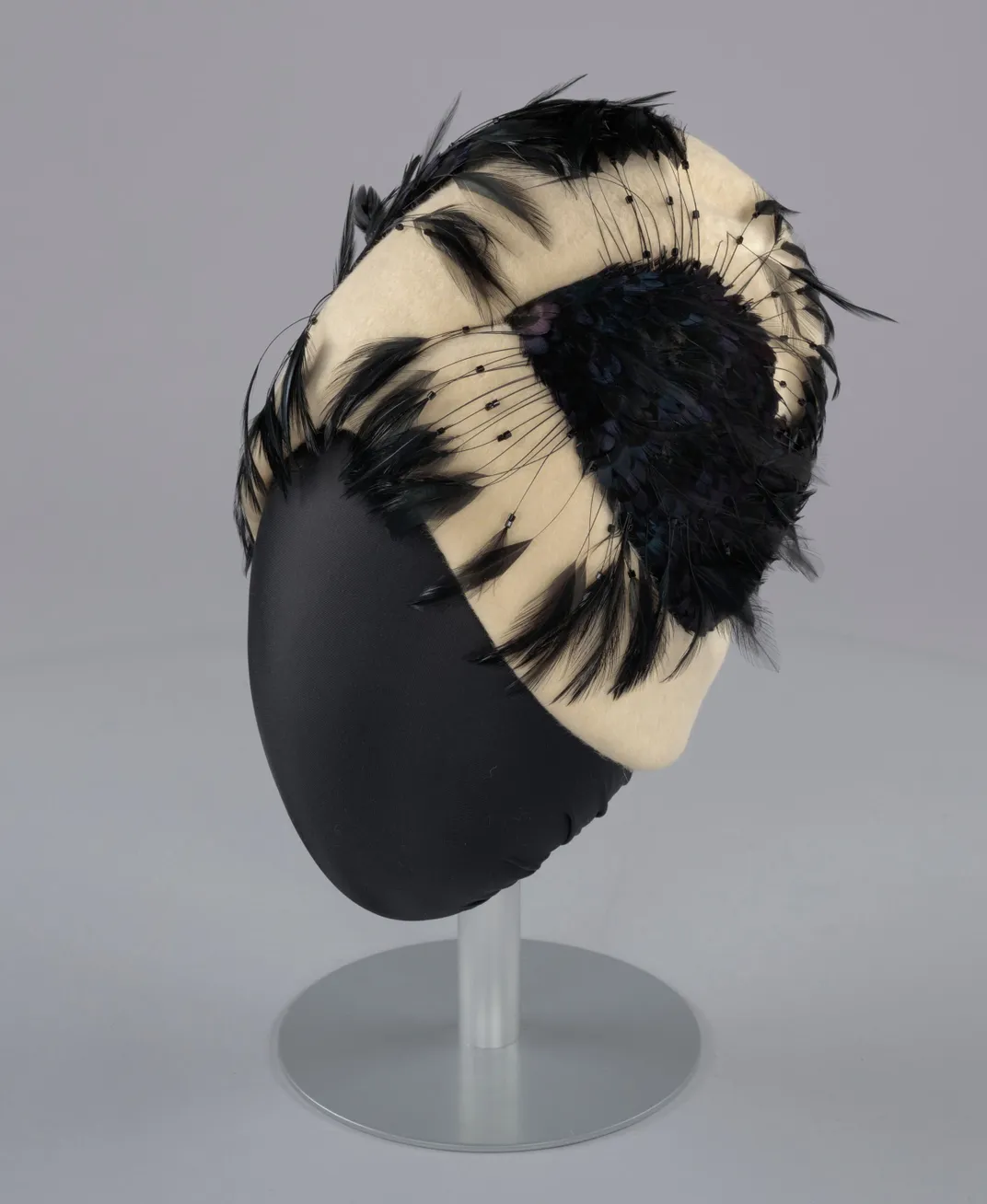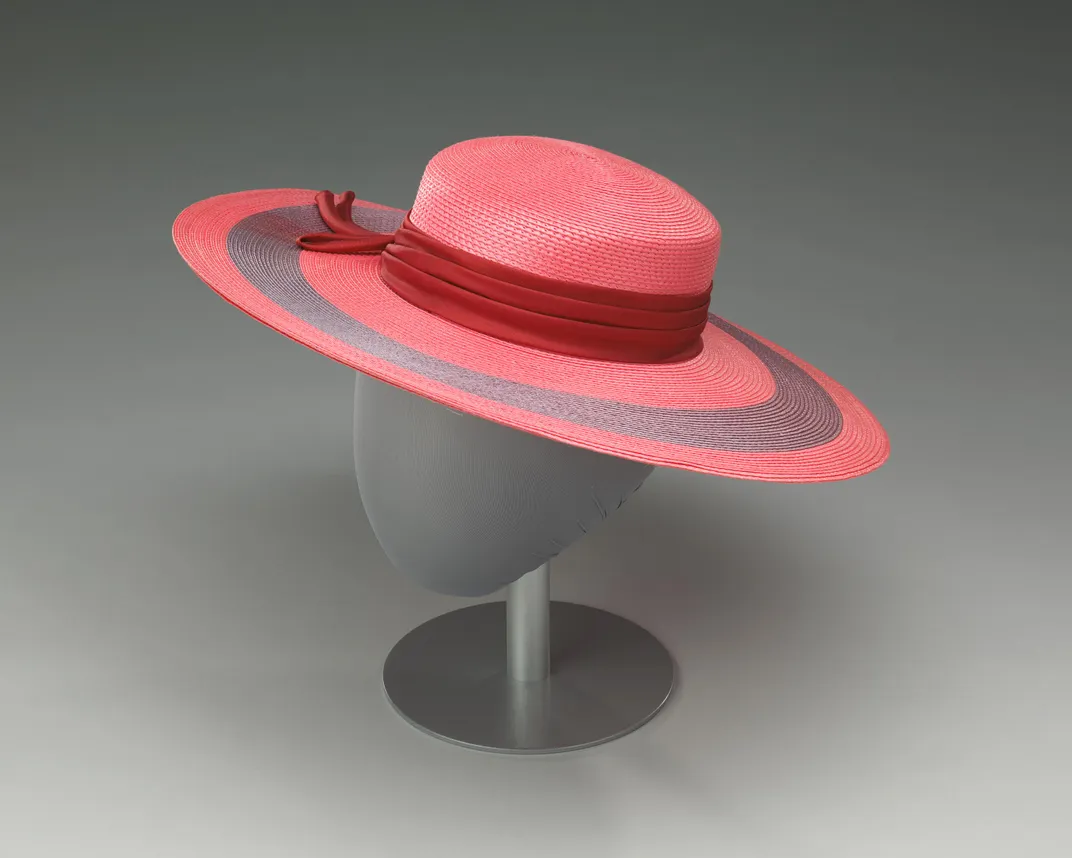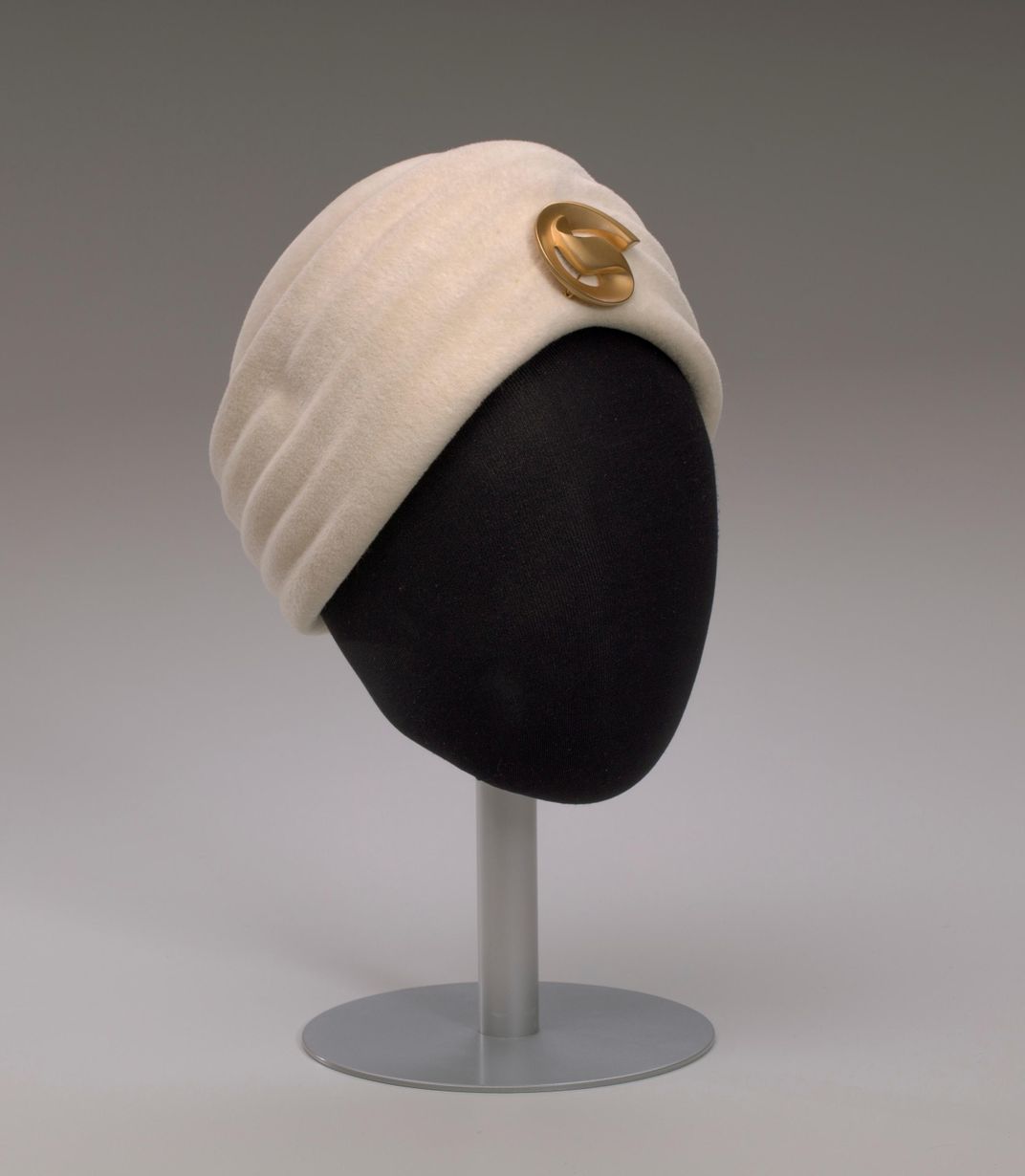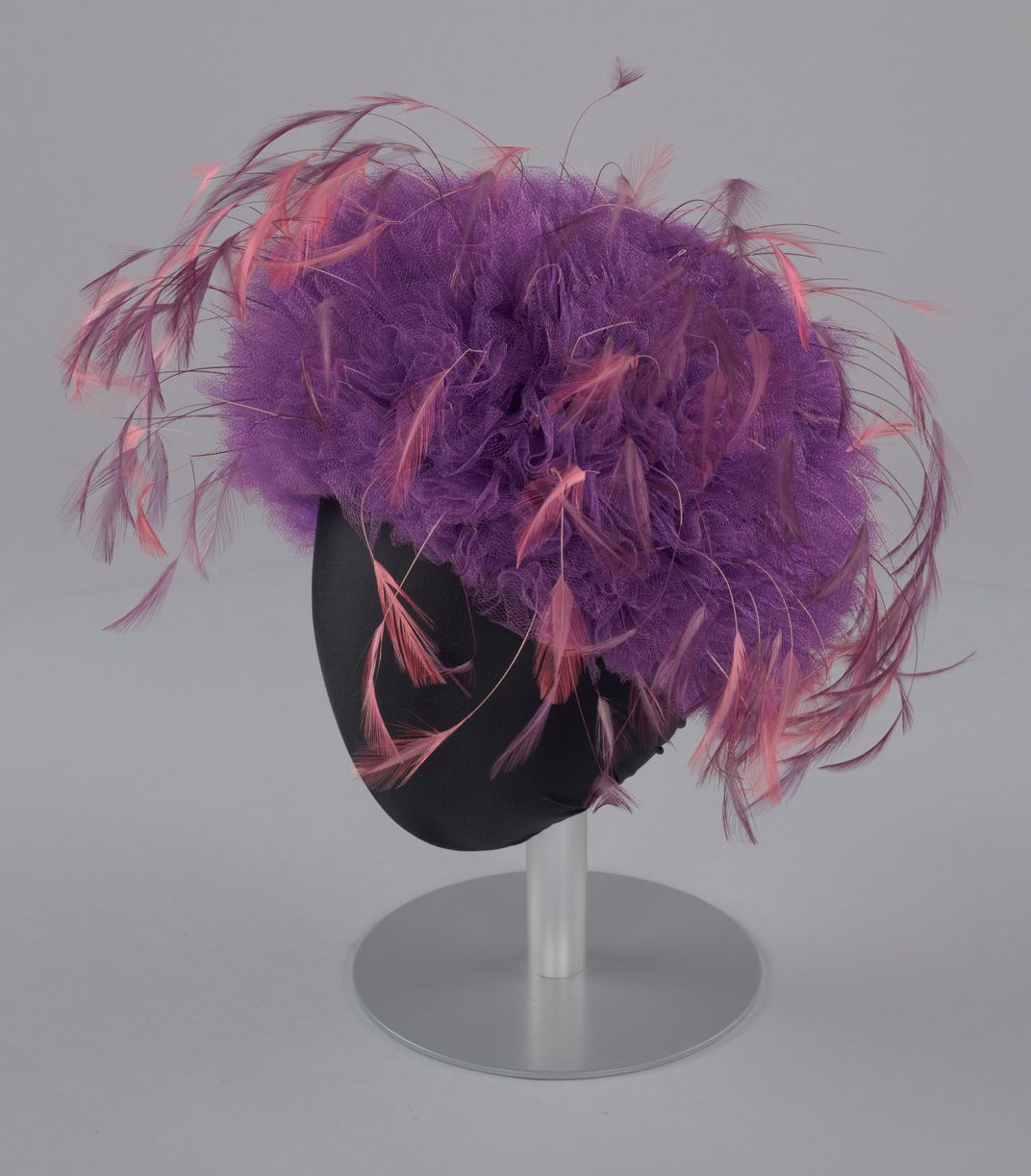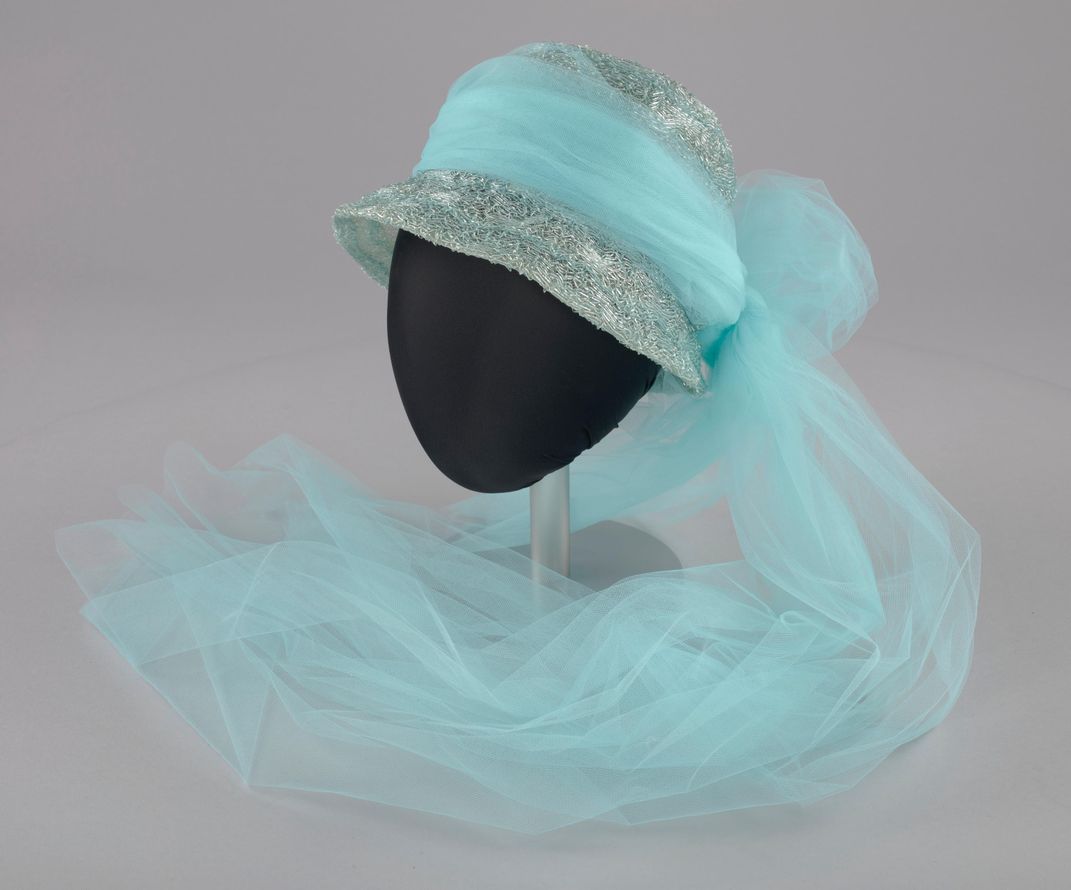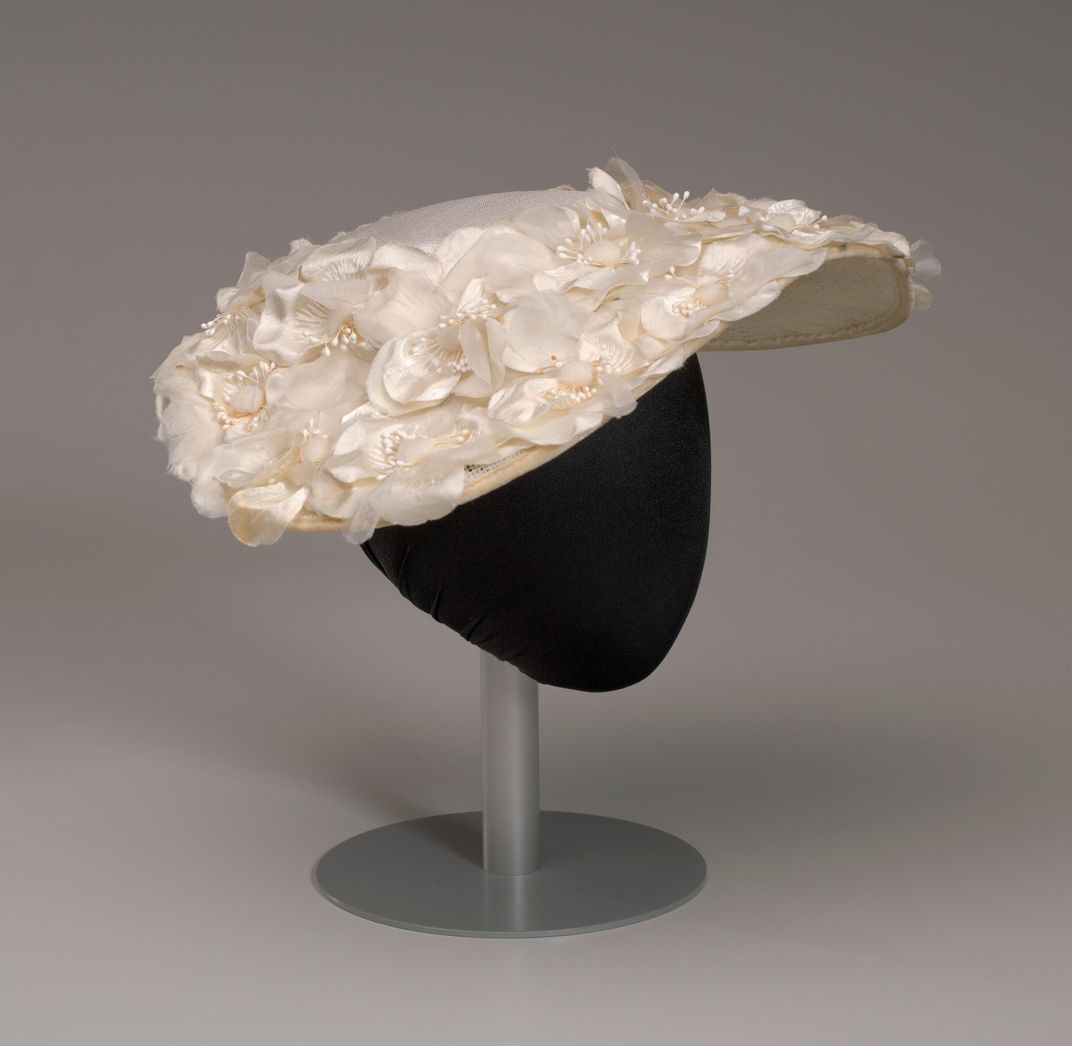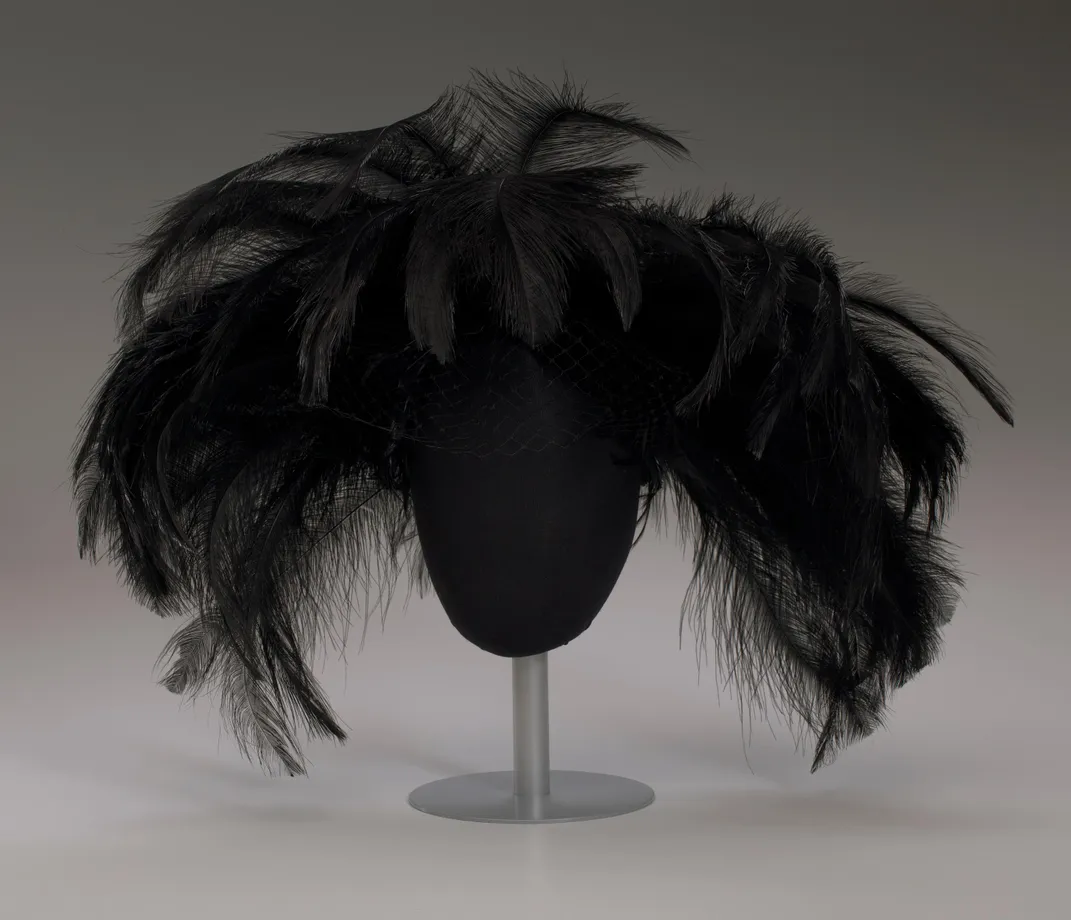Entrepreneur Mae Reeves’ Hat Shop Was a Philadelphia Institution. You Can Visit It at the Smithsonian.
The National Museum of African American History and Culture recreated one of the first businesses in the city to be owned by a black woman
At the National Museum of African American History and Culture, in a cove reimagined as a 20th-century Philadelphia hat store, you can find the extravagant hat of dreams. “The showstopper,” as the inky black hat is affectionately nicknamed, has a corona of foot-long ostrich feathers and delicate black netting, and is the craftsmanship of Mae Reeves, an African-American hat designer who was one of the first black women to own a large business in downtown Philadelphia.
Visitors to the museum can view two recreated rooms from Mae’s Millinery Shop and admire the turbans, fascinators and cloches that drew in clientele for the 56 years the store was open. “Her life,” says Smithsonian curator Paul Gardullo, “epitomizes this incredible connection between African-American women’s history, entrepreneurship and artistry.”
Reeves, who was born Lula Mae Grant in 1912, grew up in Georgia. She learned to sew and cook after her parents died when she was just 14, and by the age of 16, she had graduated high school and started teacher’s college. In the summers, she traveled to Chicago, where an uncle lived, to study millinery. She married William Mincey, and they had a son, William Jr., nicknamed “Sonny,” in 1933. In 1934, Mae did what many other African Americans living in the Jim Crow South did in the years following World War I: She moved North in search of opportunity, a journey so common that historians now call it the Great Migration. She joined her brother, Jack Grant, in Philadelphia, where she got a job at Seymour’s Ladies Apparel Shop. She’d hire local tailors to craft clothes to send back to her young son, who was being cared for by his paternal grandmother in Georgia. (William Mincey Sr. had passed away in a car accident when Sonny was young.)
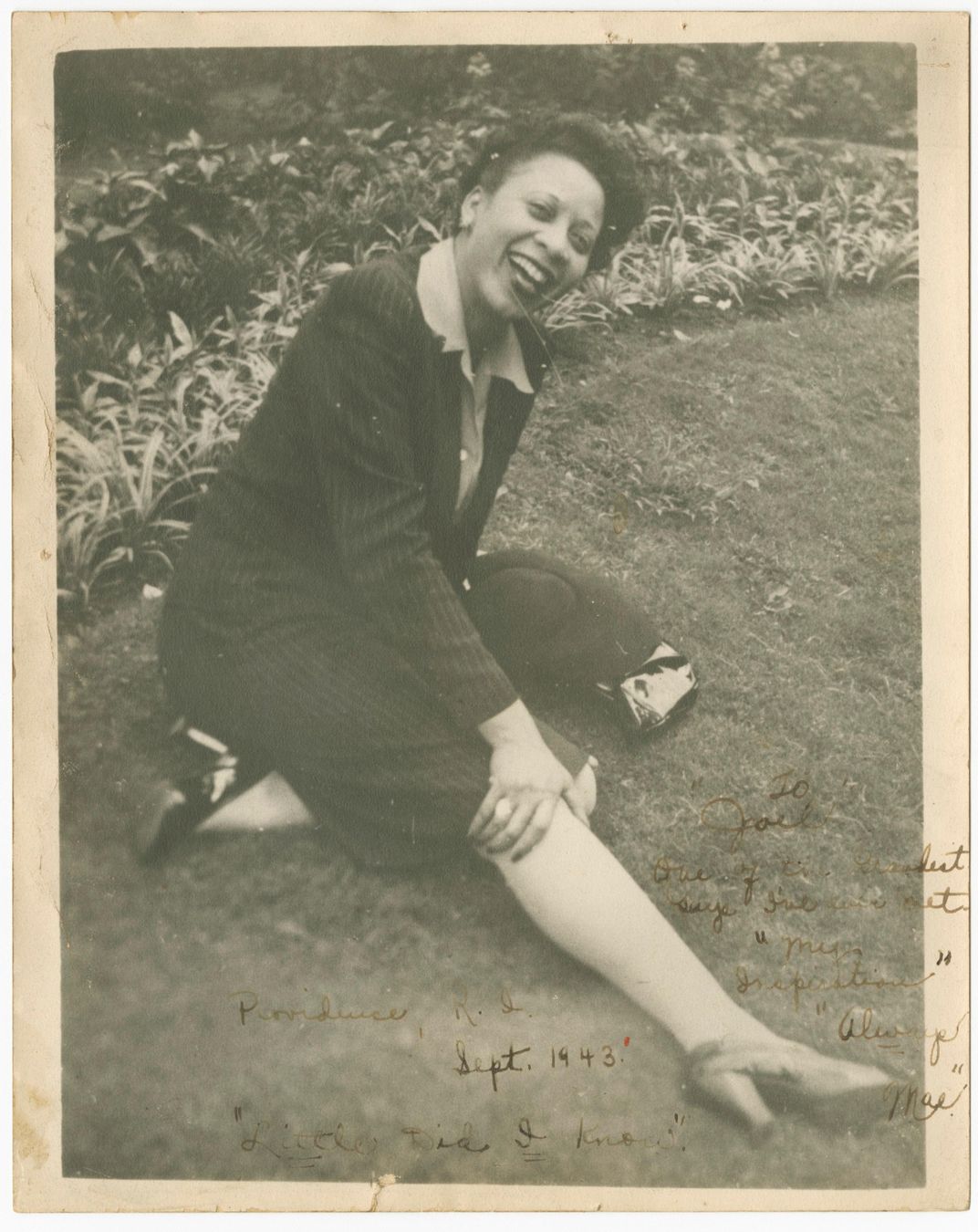
In 1940, at the age of 28, Mae went to a black-owned bank, Citizens and Southern Bank, and secured a $500 (about $9,000 today) loan to start her own business. The following year, she opened Mae’s Millinery Shop on South Street, in the middle of the city’s garment district. Just blocks from the famous Royal Theater, it attracted celebrity clients like Lena Horne, Marian Anderson and Ella Fitzgerald. As her business grew into a community institution, Mae married newspaperman Joel Reeves and moved both her store and home to the more residential neighborhood of West Philadelphia. In the move, she became the first African-American woman to own a business on the commercial corridor of 60th Street, close to the “El” train stop.
The Reeves had two children, Donna Limerick and Reginald Reeves. Limerick walked me through the exhibit, explaining how a visit to Mae’s Millinery Shop would typically unfold. You’d sit on a blush loveseat or at the table, attended by a well-dressed salesperson. (Limerick herself worked in the shop during busy seasons like Easter, dressed to the nines in a black dress, pumps and pearls.) Mae might serve champagne or sherry to her clients; she also had makeup on hand, Limerick recalls, for women to freshen up while trying on the bespoke hats. A few days later, you would drop by the shop again to pick up your hat, adorned with the ribbons, flowers or netting of your choosing. “Mae would make each hat,” Limerick says. “It was a work of art.”
/https://tf-cmsv2-smithsonianmag-media.s3.amazonaws.com/filer/a3/a7/a3a7d9bb-a9f1-40f9-90d2-32eb2000158b/2010_6_46_1_001.jpg)
Mae’s Millinery Shop also served as a community gathering place, a spot where people mingled across the lines of class and race that prevailed even in a northern city like Philadelphia. “When I was growing up,” Limerick explains, “women would be sitting at this table, from people like Mrs. du Pont or Mrs. Annenberg, wealthy socialite women in the city of Philadelphia, and in would come a schoolteacher. And they would sit right next to them and they would have a conversation.”
Reeves retired at the age of 85. But at her insistence that she’d return to make more hats, Limerick and her brothers left the shop untouched. About a decade ago, Limerick attended one of the National Museum of African American History and Culture’s “Save Our African American Treasures” programs, where Smithsonian curators “celebrate and educate people about the histories that folks keep and hold in their basements and attics,” says National Museum of African American History and Culture curator Paul Gardullo. The museum started organizing these events in 2008, and the program—now called “Hometown Treasures”—has come to 15 cities since, with upcoming visits to Denver and Philadelphia planned. When a leak broke out in the hat shop, Limerick called Michèle Gates Moresi, the museum’s supervisory curator of collections, whose card she’d saved from the event.
After carefully inspecting the hat shop, wearing white curatorial gloves, Gates Moresi told Limerick and her brother Sonny that the Smithsonian wanted to acquire the entire shop—hats, mirrors, furniture and all. “I almost fainted,” Limerick remembers. She knew that the hat shop she’d grown up in was “really special,” but to have the Smithsonian declare it a historical treasure was earthshaking.
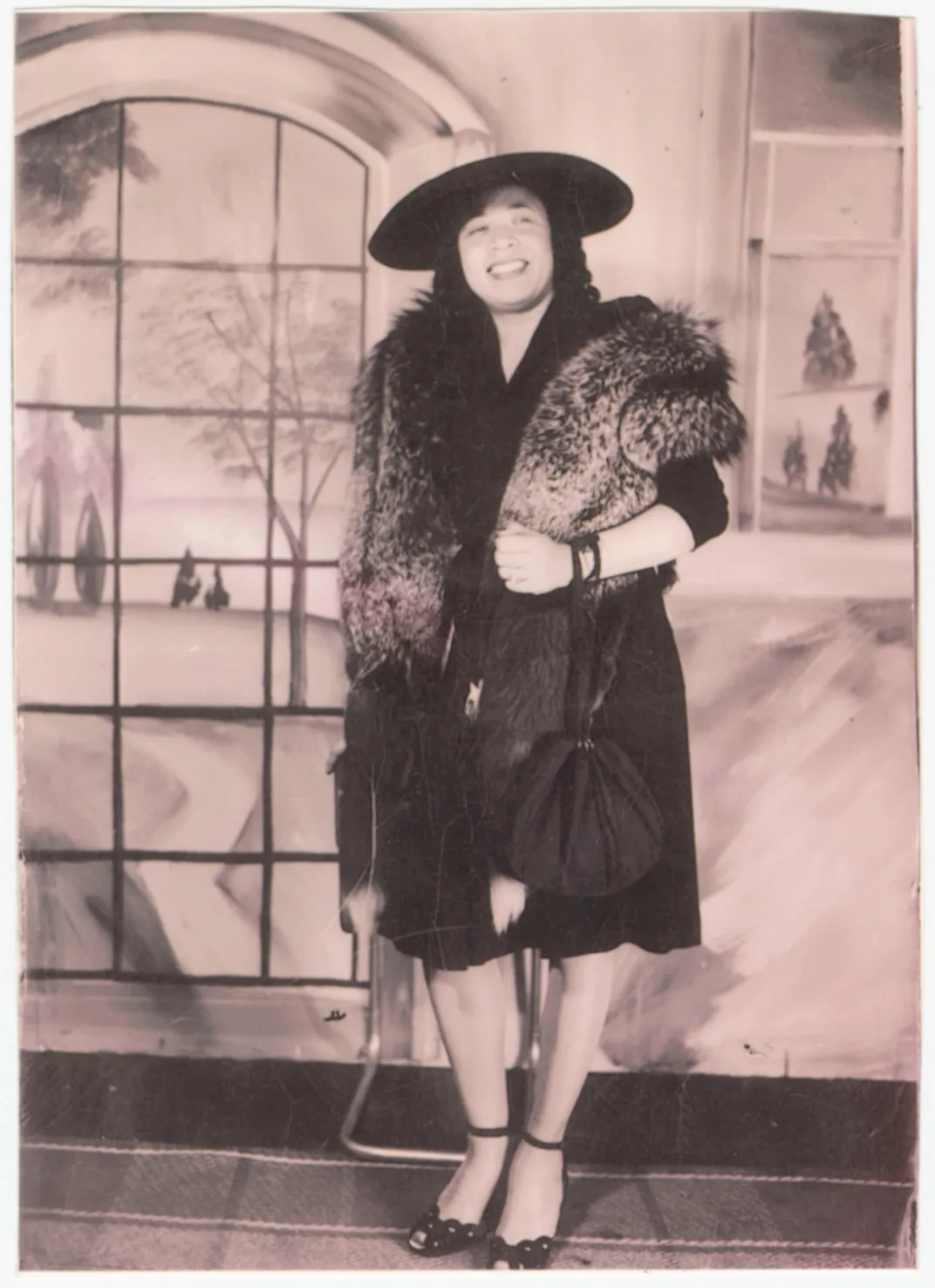
When it came time to turn the store into a museum display, Gardullo, who curated the exhibit, says “I wanted to understand Mae’s hat shop as a powerful place.” In addition to allowing Mae to combine artistry and entrepreneurship, the hat shop was “highly political,” Gardullo says, because it served as a place of civic engagement and racial integration. Mae was a member of the N.A.A.C.P., and on election days, she turned the shop into a polling station; Limerick remembers local politicians stopping by to vote and enjoy some soup or a piece of cake.
Mae’s story also illustrates the central role of community in the Great Migration, Gardullo says: “[I]t’s more complex than just a single person picking up and transplanting themselves. In the case of African-American migration during the era of Jim Crow…they had to rely on a whole network of people, both in the places they were moving from and the places they were moving to.” Mae’s move to and business success in Philadelphia was made possible, at least in part, by the family who cared for her son back in Georgia, who hosted her in Chicago while she attended millinery classes and who had already settled in Philadelphia, not to mention the support of the black-owned bank that issued her a loan or the apparel shop that gave her a first job in her new city.
The intricate, painstakingly crafted hats on display also tell a story about the importance of hats to women, and particularly African-American women, at the time, Gardullo says. Hats, Limerick asserts, were “part of your wardrobe, part of womanhood, part of growing up”—women wore them everywhere, and especially to Sunday church services. After the 1960s, Limerick says, they became somewhat less popular among African-American women as afros and wigs grew in popularity.
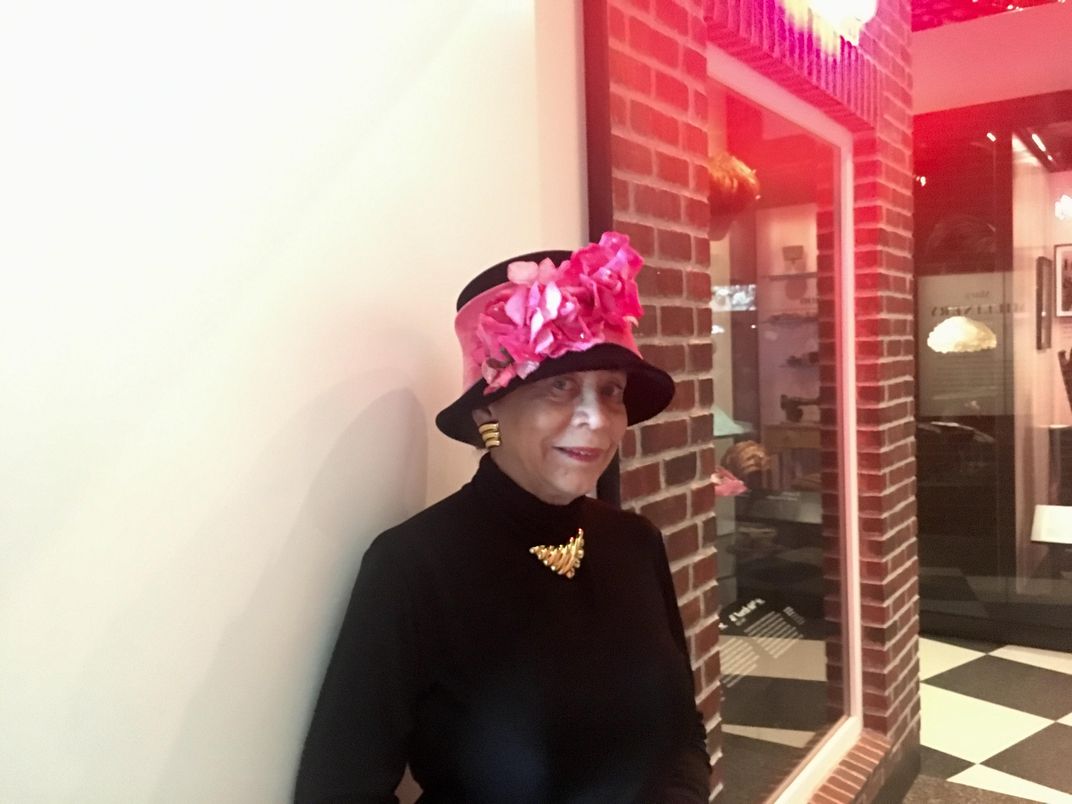
Mae Reeves herself never saw the exhibit at the National Museum of African American History and Culture, which opened in the fall of 2016; she passed away that December at the age of 104. Still, her hats live on—replicas are sold in the museum gift shop and they’ve even inspired a notable British milliner, Stephen Jones, to create a hat in her namesake. As my interview with Limerick came to a close, she chatted with a quartet of eighth-grade girls visiting from Florida, who promised her that they’d hold a hat-wearing tea party inspired by their visit to the recreated hat shop.
Limerick herself visits the exhibit often. As a former NPR documentary producer, she’s interviewed titans in African-American history like Rosa Parks, but it took the Smithsonian’s interest in the hat shop for her to fully realize her mother was a trailblazer too, one of many pioneering African-American businesspeople. “Who would have thought,” she says, “that an unknown person would be right next to Muhammad Ali?”
